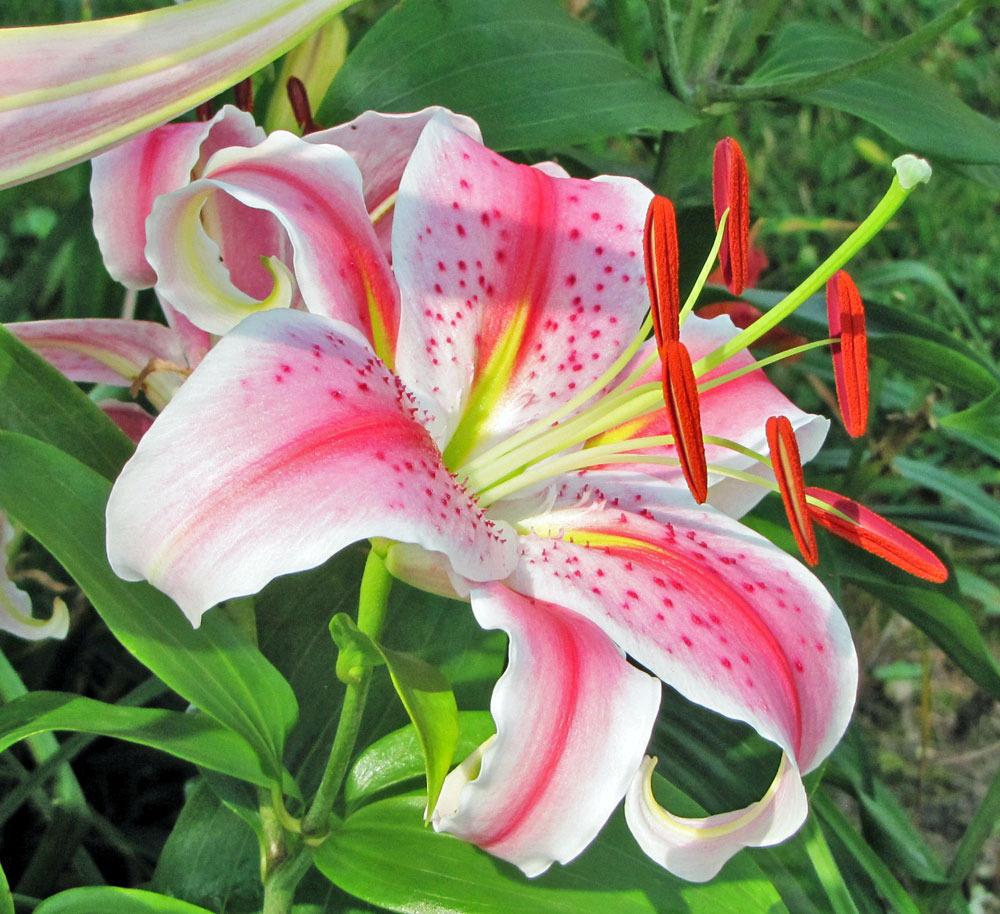I awoke the other night from a dream of Arabian princesses and lush hanging gardens. It took me a few minutes to clear my head, and when I finally did, I realized that the house was filled with the intoxicating fragrance of oriental lilies that was wafting through the windows. What fantasies fragrant lilies can inspire!

Lily Types
Lilies have a form that is entirely different than other plants. Instead of producing soft, subtle mounds of flowers they way geraniums do, they have flower stalks that stand exuberantly above other plants. Unlike daylilies (genus Hemerocallis), true lilies (genus Lilium) grow from scaly bulbs that send up tall, firm stalks lined with strap-like leaves. Clusters of large buds top the stalk, and their funnel-shaped flowers come in a wide variety of colors and scents. For further variation on the theme, flowers may point upward or hang down like bells, and the petals either project forward like the Easter lily, may lie flat like the oriental lilies, or may reflex backward as the tiger lily, looking like a sultan's hat.
Lily blossoms range from white to yellow to red to pink. Some types are scented while others are not. Some of the most common hybrid lilies the home gardener will come across are the Asiatic hybrids, the Aurelian or Trumpet hybrids, and the Oriental hybrids. Look for lily bulbs in garden centers beginning in September or get your mail order in now.
Planting Lilies
I have fairly well-drained, rich soil, so my lilies flourish. They tend not to flourish in heavy soils, and if the roots get soggy, they will rot. If you have trouble with drainage, plant them on a slight hill, raised bed, or incline. Lilies also perform best in fertile soil with plenty of organic matter. Select a well-drained spot in full sun and either dig leaf mold or compost deeply into the bed, or topdress with more compost immediately after planting. Plant so the top of the bulb is 4 to 6 inches below the soil line. The exception is Madonna lilies: They should be planted only 1 inch below the soil line.
Lily Care
I keep a healthy layer of mulch on the lily beds throughout spring and summer. Since I use compost as mulch, the bulbs are well fed and don't need additional fertilizer. Without this type of slow release fertilizer, I would have to topdress once in spring and once in early summer, using a fertilizer recommended for potatoes and tomatoes (higher in potassium and phosphorus than nitrogen). After they have finished blooming, I cut the stalks back by 1/3, leaving the rest of the stalks and leaves to produce food for the bulb. If planted behind other medium height perennials, the dying lily foliage is conveniently hidden the rest of the summer.